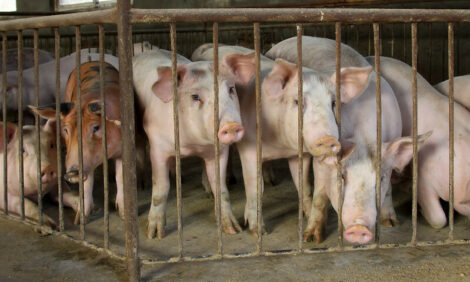



More Ham on the Menu This Christmas
US - Every cloud has a silver lining, they say. Lower prices have helped to boost ham purchases this year.More hams will grace Christmas tables this year, courtesy of a surplus that has cut prices 10 to 18 per cent compared with those of a year ago, reports Des Moines Register.
Grocers say ham sales were up almost 30 per cent through October and November and more Thanksgiving dinners this year featured ham rather than the traditional turkey.
Stores are expecting a bigger-than-usual sale of hams for Christmas, which traditionally has ranked just behind Easter as the biggest ham-selling holiday.
"We're able to use ham and pork products as promotional items to get customers in the door," said Kenan Judge, assistant vice president for meat products for Hy-Vee Stores Inc.
For Iowa's pork producers, the joy of Christmas will not necessarily be on the dinner table but in the hog cash and futures markets, which, for the first time in more than two years, are showing a hint of profit.
Hog prices rose by more than $15 per hundredweight to about $65 between August and early December. On the futures board, savvy hog producers can lock in prices of $75 per hundredweight for hogs that would be farrowed early next year and delivered for slaughter by June.
At the same time the corn markets show signs of stabilising between $3.50 and $4 per bushel, a welcome relief to producers who had to pay record prices for corn-based feed in 2008.
"We've gone from sucking bad air to at least the hope of some profits for next year," said Bryce Engbers, a hog producer near Grinnell.
Rob Brenneman, a hog producer near Washington, said: "We actually made a little money this month. It's encouraging now."
Iowa is the nation's No. 1 hog producer, and hog sales annually put $4 billion to $5 billion in cash into the state's economy.
But producers have endured two cold years of losses caused primarily by overproduction, high feed prices, a falloff in exports and then a dip in demand beginning last April with the H1N1 virus scare.
"It's been a tough time for the producers, and we want to support them," said Hy-Vee's Mr Judge, who grew up on a Monroe County farm.
The late-year up-tick in hog prices is unusual. Most farrowings usually occur in the spring. Given the 5 1/2-month growth time for a hog, the bulk of slaughtering happens in the fall, leading to a surplus that depresses prices.
But this year is different, and greater demand seems to be the key. "Exports haven't improved," said broker Don Roose of US Commodities in West Des Moines. "But consumers realize a good value when they see one."
The US Department of Agriculture reports that wholesale ham prices were down 18 per cent in November and early December from a year earlier.
As Mr Judge noted, Iowans – who live in a state where the pig population is more than six times the size of the human population – seemingly had little concern that H1N1, also known as the swine flu virus, made pork unsafe to eat.
Through mid-2009, producers were losing an average of $35 per animal. Pork organizations predicted that Iowa's roster of 8,300 hog producers – down from more than 20,000 just a decade ago and 70,000 a half-century ago – would be winnowed further. About 70 per cent of Iowa's hogs are now raised in confinements.
Despite calls from economists to reduce their hog populations, Iowa producers have defiantly kept their herds at 19.5 million through September. But other states have cut back. North Carolina, which ranks second behind Iowa in hog production, reported a decline of almost 10 percent in its hog population in the last USDA count in September.
"There's always the feeling that hogs should be raised in Iowa because we have the corn here, and we need to keep up the demand for corn," hog producer, Rick Juergens of Carroll, told Des Moines Register.








